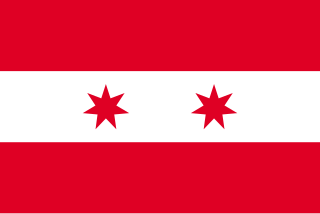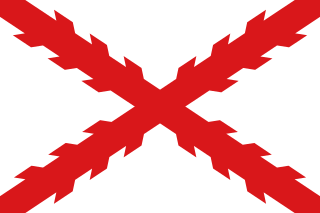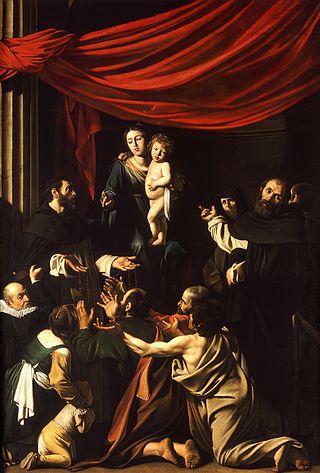Related Research Articles

Sonora, officially Estado Libre y Soberano de Sonora, is one of the 31 states which, along with Mexico City, comprise the Federal Entities of Mexico. The state is divided into 72 municipalities; the capital city of which being Hermosillo, located in the center of the state. Other large cities include Ciudad Obregón, Nogales, San Luis Río Colorado, and Navojoa.

Nogales is a city in and the county seat of Santa Cruz County, Arizona. The population was 20,837 at the 2010 census and estimated 20,103 in 2019. Nogales forms part of the larger Tucson–Nogales combined statistical area, with a total population of 1,027,683 as of the 2010 Census.

Hermosillo, formerly called Pitic, is a city in the center of the northwestern Mexican state of Sonora. It is the municipal seat of the Hermosillo municipality, the state's capital and largest city, as well as the primary economic center for the state and the region. As of 2020, the city has a population of 936,263, making it the 18th largest city in Mexico. The recent increase in the city's population is due to expanded industrialization, especially within the automotive industry.

Álvaro Obregón Salido was a Mexican military general, inventor and politician who served as the 46th President of Mexico from 1920 to 1924. Obregón was re-elected to the presidency in 1928 but he was assassinated before he could take office.

Puerto Peñasco is a small city located in Puerto Peñasco Municipality in the northwest of the Mexican state of Sonora, 100 kilometres (62 mi) from the border with the U.S. state of Arizona. According to the 2020 census, it has a population of 62,689 inhabitants. It is located on the northern shores of the Sea of Cortez on the small strip of land that joins the Baja California Peninsula with the rest of Mexico. The area is part of the Altar Desert, one of the driest and hottest areas of the larger Sonoran Desert.

Guaymas is a city in Guaymas Municipality, in the southwest part of the state of Sonora, in northwestern Mexico. The city is 134 kilometres (83 mi) south of the state capital of Hermosillo, and 389 kilometres (242 mi) from the U.S. border. The municipality's formal name is Guaymas de Zaragoza and the city's formal name is the Heroica Ciudad de Guaymas.

Cananea is a city in the Mexican state of Sonora, Northwestern Mexico. It is the seat of the Municipality of Cananea, in the vicinity of the U.S−Mexico border.

The Mexican Pacific League, officially known as the Liga ARCO Mexicana del Pacífico for sponsorship reasons, is a ten team professional baseball winter league based in Northwestern Mexico. It was founded in 1945. The league's champion takes part in the Caribbean Series each year.

Felipe Adolfo de la Huerta Marcor was a Mexican politician, the 45th President of Mexico from 1 June to 30 November 1920, following the overthrow of Mexican president Venustiano Carranza, with Sonoran generals Alvaro Obregón and Plutarco Elías Calles under the Plan of Agua Prieta. He is considered "an important figure among Constitutionalists during the Mexican Revolution."

Magdalena de Kino is a city, part of the surrounding municipality of the same name, located in the Mexican state of Sonora covering approximately 560 square miles. According to the 2005 census, the city's population was 23,101, and the municipality's was 25,500. Magdalena de Kino is in the northern section of Sonora 50 miles from the Mexico-U.S. border. To the north the municipality abuts Nogales; to the south, the municipality of Santa Ana; to the east, Ímuris and Cucurpe; and to the west, the municipalities of Tubutama and Sáric. Its main sectors include San Ignacio, San Isidro, Tacicuri, and Sásabe. The city was named after the pioneer Roman Catholic missionary and explorer, Father Eusebio Francisco Kino, who worked in the area, as well as in the present-day US state of Arizona.

The Republic of Baja California and Sonora or more simply known as the Republic of Sonora was a short-lived, unrecognized federal republic ruled by filibuster William Walker in 1854. It was based in Baja California and also claimed Sonora. Walker's actions generated interest back in San Francisco, where bonds for the Republic of Sonora were sold, and its flag was even raised in places. His enterprise, however, suffered from a lack of supplies and discontent from within; the Mexican government quickly forced Walker to retreat.
Bacerac is a town in Bacerac Municipality in the Mexican state of Sonora.
Fronteras is the seat of Fronteras Municipality in the northeastern part of the Mexican state of Sonora. Frontera translates as Border. The elevation is 1,120 meters and neighboring municipalities are Agua Prieta, Nacozari and Bacoachi. The area is 2839.62 km2, which represents 1.53% of the state total.

Naco is a Mexican town in Naco Municipality located in the northeast part of Sonora state on the border with the United States. It is directly across from the unincorporated town of Naco, Arizona. The name Naco comes from the Opata language and means prickly pear cactus. The town saw fighting during the Mexican Revolution and during a rebellion led by General José Gonzalo Escobar in 1929. During the second conflict, an American pilot by the name of Patrick Murphy volunteered to bomb federal forces for the rebels, but mistakenly bombed Naco, Arizona, instead. Today, the town has been strongly affected by the smuggling of drugs, people and weapons across the international border.

Ramón Corral Verdugo was a Mexican politician who served as the Vice President of Mexico under President Porfirio Díaz from 1904 when it was reestablished until their resignations in May 1911, due to mounting pressure from Liberal forces during the Mexican Revolution. He previously served as Governor of the Federal District and Secretary of the Interior.
The Sonora Cartel, also known as Caro Quintero Organization, was a Mexico based criminal cartel. Upon the cartel's disintegration, its leaders were incorporated into the Tijuana Cartel and Sinaloa Cartel.

The Provincias Internas, also known as the Comandancia y Capitanía General de las Provincias Internas, was an administrative district of the Spanish Empire created in 1776 to provide more autonomy for the frontier provinces of the Viceroyalty of New Spain, present-day northern Mexico and the Southwestern United States. The goal of its creation was to establish a unified government in political, military and fiscal affairs. Nevertheless, the Commandancy General experienced significant changes in its administration because of experimentation to find the best government for the frontier region as well as bureaucratic in-fighting. Its creation was part of the Bourbon Reforms and was part of an effort to invigorate economic and population growth in the region to stave off encroachment on the region by foreign powers. During its existence, the Commandancy General encompassed the provinces of New Navarre, New Biscay, The Californias, New Mexico, New Santander, New Kingdom of Leon, Coahuila and Texas.
The 1887 Sonora earthquake occurred at 22:13 UTC on 3 May in the Teras mountain range of northwestern Mexico. It was widely felt, with some damage being recorded up to 200 kilometers (120 mi) from the epicenter in both Mexico and the United States. The earthquake had an estimated magnitude of 7.6 and caused 42 casualties in the town of Bavispe and 51 overall. It was the only historical earthquake to cause considerable damage in Arizona. The 1887 Tombstone Arizona newspapers mentioned lesser quakes (aftershocks) on August 27, 1887, and November 11, 1887.

This article details the history of Sonora. The Free and Sovereign State of Sonora is one of 31 states that, with the Federal District, comprise the 32 Federal Entities of Mexico. It is divided into 72 municipalities; the capital city is Hermosillo. Sonora is located in Northwest Mexico, bordered by the states of Chihuahua to the east, Baja California to the northwest and Sinaloa to the south. To the north, it shares the U.S.–Mexico border with the states of Arizona and New Mexico, and on the west has a significant share of the coastline of the Gulf of California.

The Yaqui Wars, were a series of armed conflicts between New Spain, and its successor state, the Mexican Republic, against the Yaqui Natives. The period began in 1533 and lasted until 1929. The Yaqui Wars, along with the Caste War against the Maya, were the last conflicts of the centuries long Mexican Indian Wars. Over the course of nearly 400 years, the Spanish and the Mexicans repeatedly launched military campaigns into Yaqui territory which resulted in several serious battles and massacres.
References
- ↑ "Perfil del legislador". Legislative Information System. Retrieved 10 December 2014.